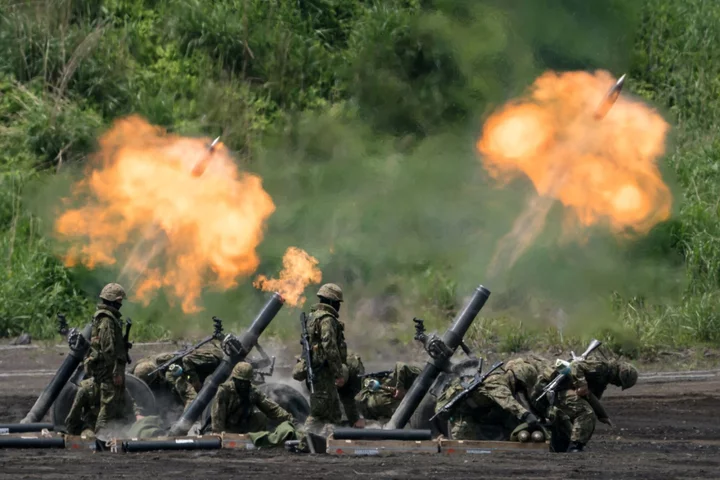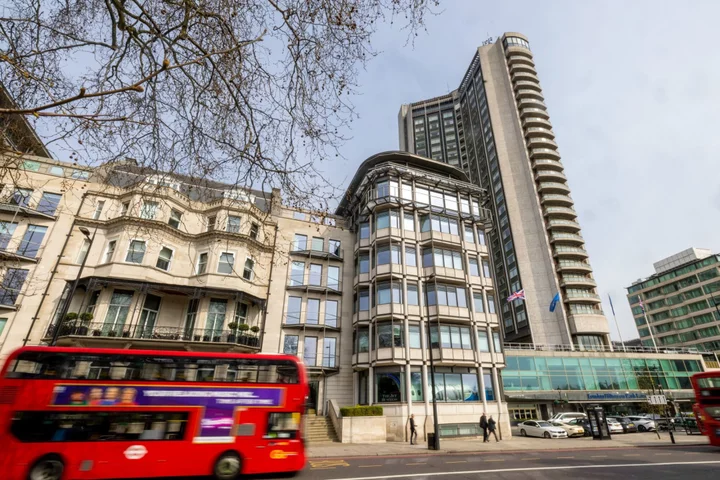“The defense calls Sam Bankman-Fried.”
The words hung in the air inside the hushed federal courtroom. Every eye fixed on the defendant – his once unruly hair shorn, an off-the-rack gray suit hanging from his thinned frame.
Sam Bankman-Fried rose to his feet shortly before 10 o’clock and raised his right hand. Then, in the same boyish voice that won over the crypto world, the man known as SBF began to speak.
“Did you defraud anyone?” his lawyer, Mark Cohen asked.
“No, I did not,” Bankman-Fried answered.
“Did you take customer funds?” Cohen clarified. “No,” he said.
For the first time, the 12 jurors heard Bankman-Fried tell his story, in his own words, about the collapse of the FTX crypto empire.
For the next five hours, Bankman-Fried largely painted himself as a disengaged CEO, who didn’t code, oversee Alameda or do little more than skim the firm’s terms of service.
“I wish I had a better understanding than I did,” he told the jury. “I wasn’t entirely sure what was happening.”
Still, he acknowledged that “a lot of people got hurt” and that he made some mistakes.
Bankman-Fried faces decades in prison on charges that he directed the transfer of FTX customer money into Alameda Research, an affiliated hedge fund, for risky investments, political donations and expensive real estate before both companies spiraled into bankruptcy last year.
Rarely do white-collar defendants take the stand in their defense. Even more rarely does their testimony end with a verdict of not guilty. After so many friends and colleagues turned against him, Bankman-Fried resorted to the one witness that he was sure would defend him at his criminal trial: himself.
Whatever the verdict, Bankman-Fried’s testimony will go down as a signature episode in one of the most dramatic corporate implosions in recent memory. Bankman-Fried, who shot to worldwide fame at FTX, is accused of orchestrating one of the biggest frauds of all time.
Friday’s testimony was the long-anticipated climax of the month-long trial in Lower Manhattan. In his testimony, Bankman-Fried essentially reiterated that it was all a mistake.
Old Colleagues
He attempted to cast doubt on testimony from his former colleagues and friends: Alameda Chief Executive Officer Caroline Ellison, FTX’s former head of engineering Nishad Singh, and Gary Wang, a co-founder of the exchange. All three, who have pleaded guilty to fraud and cooperated with prosecutors, said Bankman-Fried was the one calling the shots when customer funds were misused.
Bankman-Fried testified that he urged Ellison to hedge Alameda’s positions, to no avail.
He said that in June 2022, she told him she was concerned the hedge fund had gone bankrupt but “was not very confident.”
After a few hours of Singh, Wang and former FTX coder Adam Yedidia investigating the situation, Bankman-Fried said he was told there was a “bug” overestimating Alameda liabilities by $8 billion. He recalled Ellison saying that adjusting for the bug meant Alameda’s net asset value was actually $8 billion to $10 billion.
Bankman-Fried said because of this he was surprised to learn later that Alameda actually owed FTX around $8 billion and that he wasn’t aware the balance was being tracked through an account called fiat@ftx.com. In total, that meant the hedge fund owed $10 billion because its main account also had a negative balance of about $2 billion.
“I was very surprised,” he testified, contradicting testimony of his former inner circle, who said he was well aware of the fiat@ account and knew it was tracking Alameda’s access to customer funds.
‘Freakoutedness’
Cohen asked Bankman-Fried about his concerns that Alameda had too much risk in August 2022 and a note that Ellison wrote listing “things Sam is freaking out about.” He asked Bankman-Fried if he was freaking out at the time.
“I don’t tend to show a lot of freakoutedness, but relative to my standard, yes,” he said.
Bankman-Fried maintained, as he has all along, that the collapse of his crypto exchange – an implosion that reverberated through Washington, Wall Street, Silicon Valley – resulted from wrong-headed decisions rather than wrongdoing.
He said that “by far the biggest mistake” FTX made was not hiring a chief risk officer. The purpose of creating FTX was to “build the best product on the market,” he testified. “It turned out basically the opposite of that.”
On the stand, Bankman-Fried spoke calmly and with confidence. Occasionally, he’d look toward the jury and sometimes chuckled at questions. Earlier, Bankman-Fried’s lawyers assured the judge that their client was receiving the appropriate dose of Adderall to help him focus.
Bankman-Fried described himself as “somewhat introverted” and claimed he became the public face of FTX by “accident at first.”
Blame Game
His testimony included numerous mentions of other people, a sign that he wasn’t working alone or in charge of everything at FTX and Alameda.
The former FTX chief executive said that while he had ultimate supervisory authority over Singh and Wang, they often made coding decisions on their own.
“I am not a programmer myself,” he testified.
When asked about his relationship with Ellison, he treated the topic gently. He said their on-and-off romantic relationship ended because he “didn’t have the time or the energy to put in what I think she wanted.”
Jurors paid closed attention as Bankman-Fried told the story of meeting Wang in college, his early work at Jane Street Capital, and launching Alameda in Berkeley, California. Interest faded when he embarked into explaining the technical details of trading at FTX, company policies and crypto markets.
He told jurors about his time at the Massachusetts Institute of Technology, which he attended from 2010 through 2014. He called the coed fraternity Epsilon Theta he belonged to “nerdy and dry.”
There were “lots of board games, no drinking,” he recalled.
The testimony mirrors points raised by Cohen in his opening statement, in which he portrayed his client as a hard worker, who never drank and never intended to defraud anyone — unlike the “cartoon villain” he claimed prosecutors were trying to make him out to be.
The former crypto mogul said he wasn’t good at naming things and the hedge fund ultimately became Alameda Research because it was just a generic name that made sense given that Berkeley was located in Alameda County.
That comment drew a smile from his father, Joe Bankman, who sat in the second row of the courtroom with his mom, Barbara Fried. The two passed notes back and forth throughout their son’s testimony on a legal pad.
Experience
Bankman-Fried tried to portray himself and the others at Alameda as youngsters with no concept of how to run a business.
“These were 25-year-olds who had no experience in starting a company,” he testified. The government successfully objected to that line of testimony, however, cutting his comments short.
Bankman-Fried confirmed that Alameda had a line of credit and could borrow from FTX, the central focus of prosecutor’s case. But he said that Alameda provided bids for crypto trades, and FTX would often give other so-called market makers lines of credit to “make it more efficient for them” to send buy and sell orders.
Bankman-Fried claimed that he knew roughly the amount Alameda was using but “was not aware of a theoretical maximum.”
After hours on the witness stand, Bankman-Fried may have made progress with some spectators in the public gallery. Greg Cawthorne, a crypto software engineer traveling from London, arrived around 2:05 a.m. to get a seat in the main courtroom.
“After seeing two days of the trial, I am definitely maybe a little less fully against him,” Cawthorne said. “Now I gotta think maybe there were some more doubts than I thought.”
“Today he seemed almost charismatic - almost, not quite,” Cawthorne said.
--With assistance from Hannah Miller, Olga Kharif, Teresa Xie and Beth Williams.
Author: Allyson Versprille, Bob Van Voris, Yueqi Yang and Chris Dolmetsch









